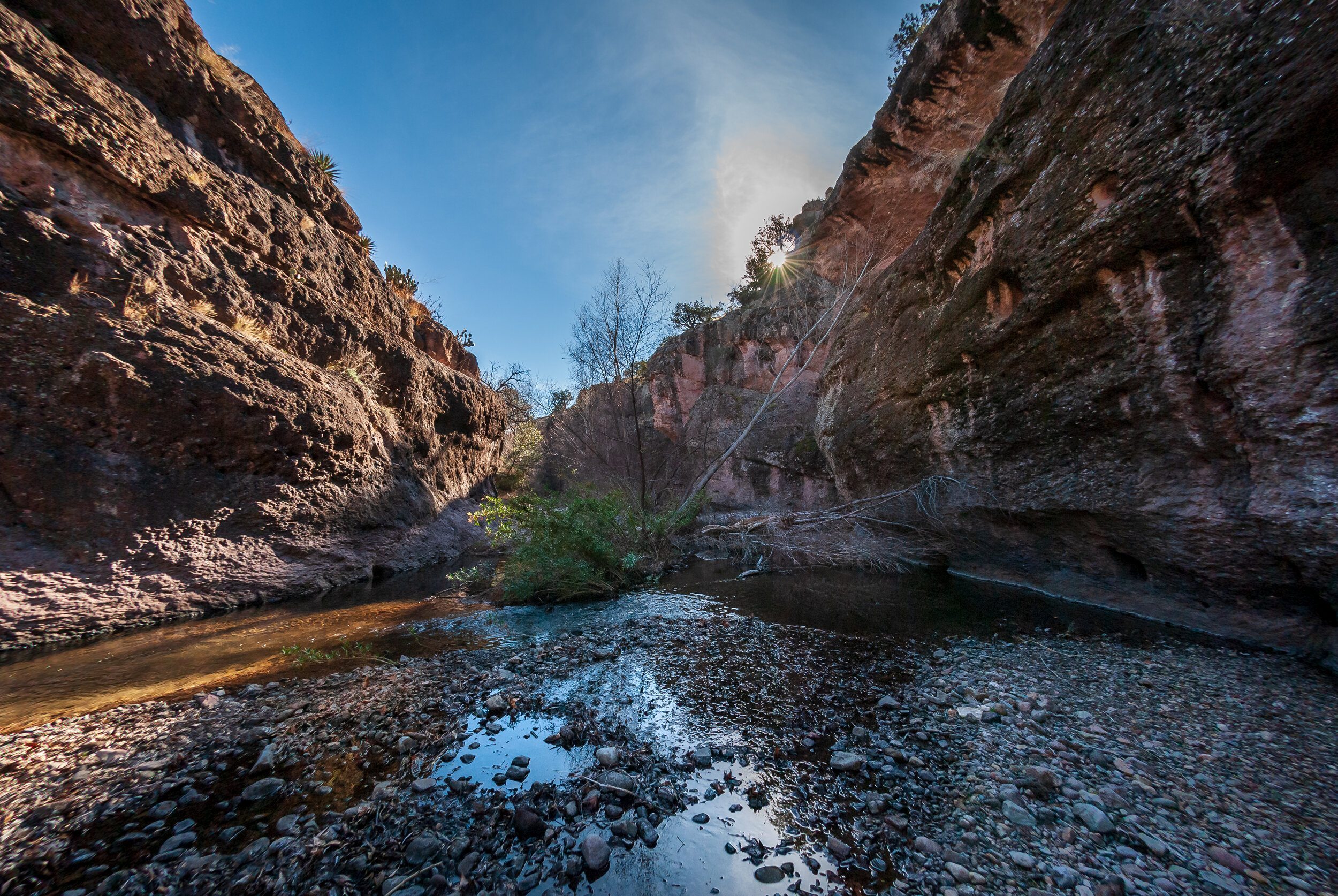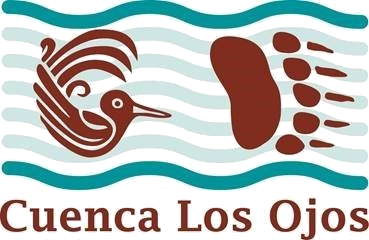
History
Cuenca’s quiet beginnings date back to the 1980s, when Valer Clark moved to a cattle ranch in the Chiricahua Mountains in southeastern Arizona. Clark was taken by the rawness of the desert landscape but dismayed by how overgrazing had taken its toll on the grasslands.
An east coast native, Clark was not familiar with the erosive forces of monsoon rains. She was awed to see how the rain - which the desert desperately needed to survive - could scour away soil, seeds, and plants. Curious by nature, Clark stacked a few rocks in a small ravine that had developed by her driveway. After a particularly strong monsoon event, Clark was pleased to see that her improvised dam had prevented soil from washing away. In the days that followed, the stabilized soil behind her small dam remained wet and cool.
Her curiosity was piqued. Could similar rock structures help retain soil and water all over the hillsides? She hired a team of artisanal rock workers from Mexico whose ancestors had built similar erosion control structures in their native lands. For five years, her team traveled over the terrain gathering rocks and stacking them in eroded areas. The results were transformative: the loose rock structures captured soil and slowed the rainwater runoff. In just a few years, the hillsides started to green as seeds sprouted in the stabilized soil.
Clark could not have predicted the extent to which her simple solution could positively impact the once degraded landscape. After a few years of this arduous restoration work, Clark noticed that the streams, which used to flow only after rains, began to flow more consistently and for longer periods of time. This caught the attention of researchers from Arizona State University (ASU) who were working to document the dwindling populations of desert fishes in Arizona. Habitat loss was threatening the Yaqui chub, but in Turkey Creek, which flowed through Clark’s restored area of the Chiricahua Mountains, the populations of these fish were flourishing.
Clark and the ASU researchers were studying the loss of fish habitat downstream in the San Bernardino River, a historically important freshwater stream in North America, when a property fortuitously became available. Clark jumped at the opportunity to expand her conservation efforts to Sonora, Mexico. The 13,600-acre Ojos Calientes ranch had suffered from years of overgrazing and mismanagement, but Clark was confident that her tried and true restoration techniques could reverse the damage. She began by removing the cattle to ease grazing pressure and then focused her attention on restoring eroded areas along the San Bernardino River and the Cajon Bonito with small loose-rock structures. Within a few years, the hillsides began to hold their verdant growth longer and the creeks and streams began to flow with clear water for longer periods of time.
In the early 2000s, Clark noticed that the impacts of her restoration techniques had plateaued. Native grass recruitment had slowed as mature grasses thatched over. It was time to consider a renewed approach. Clark acquired a small cattle herd to graze the grasslands and add biomass to the soil. By implementing a holistic and regenerative grazing strategy, she found the cattle mimicked the patterns of native herbivores.
Clark also focused on restoring river beds, which in some places were more than 30 feet deep due to erosion. She designed and constructed much larger versions of the small trincheras. These massive structures, called gabions, consist of wire cages filled with rocks and are strategically placed in river beds to catch eroding soil during heavy rains. The gabions worked in tandem with the trincheras to slow the flow of rain water and to stabilize soil, seeds and plants.
This was the inadvertent birth of Cuenca los Ojos. Clark was inspired by the landscape’s ability to heal and she worked to acquire additional lands adjacent to the Ojos Calientes ranch. Over the course four decades, Clark acquired more than 120,000 acres and has constructed a series of gabions, trincheras and earthen berms combined with aeration and reseeding to actively restore much of this area. Her vision is to help create a wildlife corridor by piecing together a mosaic of strategically located properties that range from grasslands to desert to mountain woodlands.
In 2018, Clark formally created the US non-profit [501(c)3] called Cuenca Los Ojos to work with its Mexican counterpart, Cuenca los Ojos A.C. (Civil Association), to manage the restoration work and protect the land. The mission of the two sister organizations is: preserve and restore the biodiversity of the US/Mexican borderlands through land protection, habitat restoration, and wildlife reintroduction. The properties are designated as part of a Voluntarily Declared Conservation Area (ADVC). Now in her 80s, Clark took the final steps to institutionally secure the formally recognized, permanent protection of this unique landscape-scale preserve. Cuenca was able to convey the lands in Sonora, Mexico into a trust, or in Spanish a fideicomiso - which achieves the same objectives as a conservation easement. Generous financial support was provided by the Wyss Foundation and Fondo Mexicano para la Conservación de la Naturaleza A.C.
Photographs dating back to the late 1800s show a once lush and verdant wetland – or ciénega, as it is locally known – a haven for wildlife and migratory species alike.
Valer Clark and
Cuenca Los Ojos
A story of degradation and restoration
Credit: Valer Clark and Laura Nolier
“Now that we have soil and water back on the land, grass is beginning to appear on the uplands and trees are growing in the riparian areas. Bringing the grasses back is the most significant marker of our work. It speaks to the health of the landscape. Every blade of grass helps bring water back into the soil and every drop of water in the soil means more grass can grow. It has been a learning process. We have been at this for several decades now and are better able to predict what needs to be done to prevent erosion and to bring back the water.”
— Valer Clark, Founder

